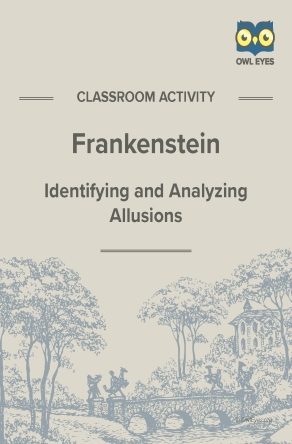Frankenstein Allusion Activity
- 8 pages
- Subject: Allusion, Literary Devices, Lesson Plans and Educational Resources
- Common Core Standards: RL.11-12.4, RL.9-10.1, RL.9-10.4, RL.9-10.9
Additional Frankenstein Resources
Product Description
Initially conceived for a ghost story competition, Mary Shelley’s Frankenstein has become a touchstone of the gothic genre. When the scientist Victor Frankenstein miraculously creates life—a monstrous, human-like creature—the consequences quickly prove disastrous. The creature runs away and, confused and anguished by his own wretched existence, searches for his creator in the hope of destroying him. Shelley subtitled the novel The Modern Prometheus because of how it echoes the Greek myth. Other key allusions include John Milton’s Paradise Lost and the biblical book of Genesis.
Skills: analysis, close reading, drawing inferences from a text, interpreting implications of allusions
About This Document
The Owl Eyes Allusions activity gives students an opportunity to practice identifying and analyzing allusions. Allusions broaden the scope of a text and imbue passages of the text with deeper meaning by subtly drawing on literature, history, science, geography, philosophy, mythology, or other cultural sources. The main components of this activity include the following:
- A contextualized paragraph of the text
- A handout defining “allusion” with examples from classic works
- A list of tips for spotting allusions
- A step-by-step guide to activity procedure
- An example answer
In completing this activity, students will be able to identify, analyze, and interpret allusions, thereby accessing deeper meanings within the text.







